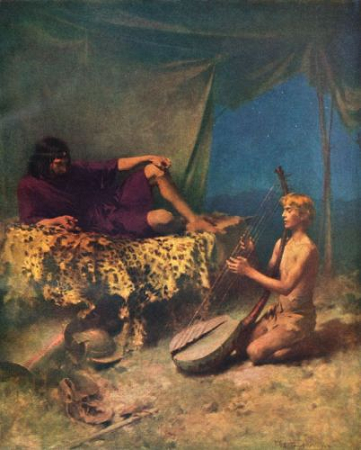
"There are five figures in the Bible who, according to standard Jewish and Christian interpretation, are reported to have ascended to heaven: Enoch (Gen 5:24); Elijah (2 Kgs 2:1-12); Jesus (Luke 24:51; Acts 1:9); Paul (2 Cor 12:2-4); and John (Rev 4:1). There are also four related accounts in which individuals behold the throne, or heavenly court, of Yahweh: Moses, Aaron, and the elders of Israel (Exod 24:9-11); Micaiah (1 Kgs 22:19-23); Isaiah (Isa 6:1-13); and Ezekiel (Ezk 1, 10). Finally, there is the scene in which an otherwise unidentified “son of man” comes before the throne of God in an apocalyptic vision of Daniel (Dan 7:11-14)."
I. Ascent as an Invasion of Heaven
"Generally speaking, just as there is no coming back from the dead, there is no idea or expectation that humans can go to heaven, a place reserved for God and his angelic attendants. This means that any report of a human being ascending to heaven would be seen as not only extraordinary, but often even as an intrusion or invasion of the divine realm."
II. Ascent to Receive Revelation
"This type of ascent involves a “round trip” from earth to heaven and back again, or some visionary experience of the heavenly court from which one returns to normal experience (ascent/descent). In contrast to the previous type, the journey or experience is appraised most positively. The earth, not heaven, is still understood as the proper human place, so that the ascent remains a “visit,” though not an intrusion, into the divine realm."
III. Ascent to Immortal Heavenly Life
"This type of ascent to heaven is final or “one way:” a mortal obtains immortality, or release from mortal conditions, thorough a permanent ascent to the heavenly realms..." "The only candidates for such immortalization in the Hebrew Bible are Enoch and Elijah..."
IV. Ascent as a Foretaste of the Heavenly World
"This type of ascent involves a journey or “visit” to heaven which functions as a foretaste or anticipation of a final or permanent ascent to heavenly life. Though related to the second category, ascent to receive revelation, it is fundamentally different. For example, when Isaiah is taken before God’s throne, though he receives a commission and experiences the glories of the heavenly world, there is no idea that he will return to that realm. He remains a mortal who dies and descends to Sheol with all the other dead."
If I Ascend to Heaven…Paul’s Journey to Paradise, by James Tabor
"This article was originally published on Dr. James Tabor’s popular Taborblog, a site that discusses and reports on “‘All things biblical’ from the Hebrew Bible to Early Christianity in the Roman World and Beyond.” "

 RSS Feed
RSS Feed